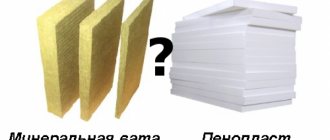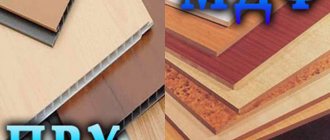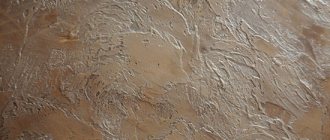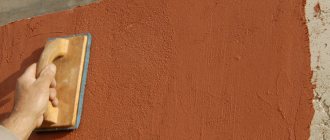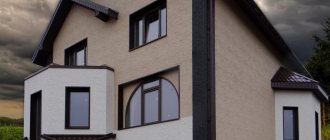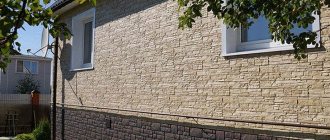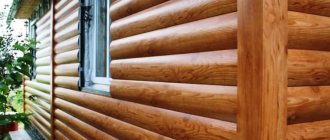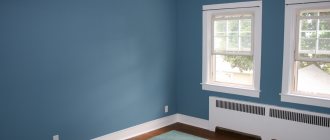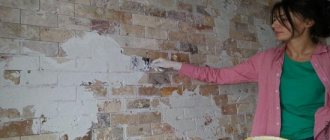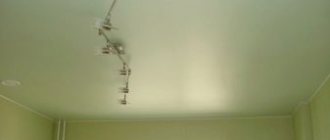When choosing the type of exterior finishing, they often turn to the use of facade decorative plaster.
The reasons for this preference are:
- The ability to create an artistic surface that emphasizes the aesthetic appearance of the building.
- A durable protective layer is applied that can protect wall materials from atmospheric influences and temperature.
- A lot of additional materials are not required, as is the case when finishing with siding, panels, etc.
- All work can be done independently, without the involvement of expensive specialists.
Such advantages provide reasons for choosing decorative plaster as a finishing material, but do not answer the most important question - which material is most suitable for finishing? The fact is that there are many samples of decorative plaster, created on different bases and having different properties.
From a quality point of view, they are all quite worthy of use for cladding, but several types of coatings are the undisputed leaders. Let's consider one of these materials - silicone decorative plaster.
Silicone plaster for facade - description, advantages and disadvantages
Silicone plaster appeared in the arsenal of finishers relatively recently. In terms of its qualities and performance characteristics, it stands somewhat apart from all other materials, since the basis of the mixture is silicone resins , which give the coating a lot of properties that distinguish it favorably from more traditional compositions.
The material has high elasticity and water-repellent properties . These qualities prevail among others and give the surface a very expressive appearance. The coating is pleasant to the touch, the colors are bright and do not change over time.
The advantages of silicone plasters include:
- Elasticity of the coating. The surface will not crack from vibration or minor movements due to shrinkage.
- The water-repellent properties (hydrophobicity) of the surface reliably protect against water penetration, contamination or other unwanted deposits. For cleaning, regular rain or, if necessary, spraying with water from a hose is sufficient.
- The high vapor permeability of the material ensures the removal of steam from the wall pie materials, contributing to the safety and durability of the building.
- The high adhesion of the composition allows it to be used on almost any material (some will require preliminary coating with a primer).
- There is no predisposition to the formation of mold, mildew, efflorescence, etc.
The only disadvantages include the high price of the material , which in some cases becomes the determining factor in choice.
Silicone plaster
Distinctive features of silicone plaster from other types
Unlike other finishing materials, silicone plaster is highly elastic. This property gives the coating the ability to compensate for movements or shrinkage changes in size characteristic of buildings in the first years of operation.
In addition, the water- and dirt-repellent properties of the surface have been significantly increased, which is why it never gets dirty or, if necessary, can be easily cleaned by simply pouring water.
In addition, all the best properties of other plasters - strength, fire resistance, excellent protective qualities - are fully present in silicone compositions and even somewhat enhanced.
At the same time, silicone compounds have a wide choice of colors , which again sets them apart from the general range of materials. The ability to choose any desired color (and, moreover, bright and rich) allows you to do without subsequent painting of the coating, which significantly saves time, money and reduces labor costs.
Types of silicone plaster for facades
Silicone mixtures come in several varieties to form common types of coating.
The following texture types are used:
- "Bark beetle."
- "Lamb."
- "Fur coat".
- "Venetian plaster".
- "Baumit silikontop".
In principle, all known surface types are available in the range of silicone compounds. In addition, the number of produced types of material is expanding almost daily, all free niches are immediately occupied by new mixtures or modified compositions that have been tested in practice. Therefore, a complete listing of the types of silicone plasters does not make sense; it will not be able to exhaustively cover the entire model range.
Types of Silicone Finishes
Recommendations for selection
When purchasing plaster, you need to pay attention to the following factors:
- Grain. To obtain a coating with a smooth texture, select the minimum grain size, and vice versa.
- Hue. A white or grayish mixture can always be tinted directly in a supermarket or specialty store.
- Scope of application. If the material is purchased for outdoor use, it must be frost-resistant.
- Best before date. The composition must not be expired, otherwise it will not be able to meet the declared characteristics and properties.
For facade work, the most popular plasters are those with a bark beetle or fur coat texture. They go well with stone and brick finishing. No less in demand are compositions with stone chips already introduced into them: marble, granite.
Manufacturer Farbe
Plastering facades not only helps solve design problems, but also significantly improves the performance characteristics of any building. A layer of plaster improves thermal insulation, protects load-bearing walls from precipitation and allows you to hide minor construction flaws.
The only drawback of classic plaster is its fragility and high consumption of material. It is much wiser to use polymer-based plaster as a more modern and effective finishing material.
Compared to mineral-based materials, Farbe silicone plaster has the following advantages:
- elasticity that prevents the formation of cracks on the walls;
- the ability not to allow moisture to pass into the surface, but at the same time to release vapors outside;
- long-term preservation of the original color even in direct sunlight;
- ability to self-clean with rainwater.
The range of applications for silicone plasters can be expanded due to the possibility of tinting. There are about 2,500 different shades, allowing you to very accurately realize any designer’s plan.
In this case, the service life of the plaster is at least 25 years. In most cases, this means that a cottage that has been plastered once will not require cosmetic repairs until almost the end of its life.
Due to the elasticity of silicone, the plaster can be applied in a very thin layer even on uneven surfaces . The flexibility of the material allows you to reliably cover microcracks in the walls, thereby improving hydro- and thermal insulation. This provides significant savings on energy resources.
Excellent moisture resistance makes it possible to get rid of periodic repairs of external walls. Neither rain, nor snow, nor ice will damage the material for at least 25 seasons.
Popular brands
Silicone plaster is produced by many companies, the most popular of which are:
- Ceresit, from the German company Henkel, which produces plaster mixtures of various colors for interior and exterior work. Silicone plasters are supplied in plastic buckets of 25 kilograms, completely ready for use.
Environmentally friendly mixtures are easy to apply, creating a thin but very durable layer of decorative cladding. Each container contains clear and detailed instructions for applying the decorative mixture.
Figure 13. Ceresit plaster.
- the Weber construction concern are characterized by an increased level of adhesion to any substrate. High-quality, crack-resistant mixtures are intended for finishing walls and ceilings inside buildings and plastering facades.
Figure 14. Weber plaster.
- the Bolars trademark has high mechanical strength, long service life and impeccable aesthetic properties. A wide color palette allows you to realize any design solutions.
Figure 15. Bolars plaster.
- Farbe - silicone plasters from a Russian manufacturer for facade work. They are characterized by high water resistance and vapor permeability. Can be tinted in various colors and shades. The service life of the coating is at least 15 years.
Figure 16. Farbe plaster.
Important. If you hire a professional to perform plastering work, trust him to select the plaster mixture. Having extensive experience working with various compositions, he will be able to select the most suitable composition for your repair.
Technical characteristics and composition
The technical characteristics of silicone decorative plaster have slightly different meanings for each specific type of material. Therefore, the data provided will contain average characteristics or indicate a range of possible values.
- Grain size - 1.5-3 mm.
- Consumption - 2-4 kg/sq.m.
- The thinner is water.
- Application method: manually.
- Temperature range from -50° to +70°.
- Temperature during application from +5° to +30°.
- Possibility of tinting in any color.
- Complete drying time is up to 2 weeks.
- Setting time to create texture is 15 minutes.
- Frost resistance - 100 cycles.
- Possibility of protection from rain after 24-48 hours.
CAREFULLY!
Do not operate in strong winds, rain or direct sunlight . To protect from the sun, use a special net installed over the scaffolding.
Recommended for application on:
- Reinforcing mesh over external insulation.
- Leveling plasters.
- Concrete and cement surfaces.
- Gypsum surfaces.
- Drywall.
- Lime surfaces.
- Foam blocks, aerated concrete.
Not recommended for use on:
- Oil varnishes or paints.
- Polymer resins or materials.
- Varnish coatings.
NOTE!
The given characteristics may differ slightly from the data on the packaging of a particular model, but not within too large limits. This difference is caused by the constant search for new options with the most successful operating parameters.
Safety precautions at work
Plasterers work in overalls and use protective equipment, especially when working on horseback and finishing the ceiling. When using mechanization, it is necessary to wear tight-fitting goggles to protect the eyes from splashes and a respirator to protect the respiratory system. General safety rules should be observed:
- de-energize the premises;
- check the reliability of scaffolding and scaffolding during facade processing;
- have the necessary tools on hand when working with alkaline and acidic mixtures (acid is neutralized with 0.5% soda solution, alkali with 1% acid);
- ensure compliance with water and drinking balance;
- have a supply of clean water for emergency rinsing of mucous membranes.
Gloves to protect the skin of the hands are used as desired; the mixtures do not cause burns.
On which walls can silicone façade plaster be used?
The use of silicone plaster is allowed for any walls , the only condition being the absence of paint and varnish coatings on the surface.
The high vapor permeability of the material makes it possible to use it on porous or cellular materials - aerated concrete, foam blocks, etc.
The specificity of the surface, which has water- and dirt-repellent properties, makes the material attractive for use on buildings located on busy highways or in an industrial area.
In addition, silicone compounds work well on external insulation , creating high-quality protection from precipitation, but providing a free outlet for steam, which helps remove moisture from the layers of the wall pie.
To apply the composition to the insulation, you will need an intermediate layer of reinforcing mesh.
Preparing the surface for plaster
Before starting the actual application of facade plaster, several preparatory operations should be performed.
Required:
- Inspect the surface of the wall for various defects - cracks, potholes, peeling of old plaster, etc.
- The exfoliated areas should be separated, and any cracks found should be “opened” with a spatula so that a high-quality seal can be made.
- Fill all imperfections with putty and carefully level the surface.
- If crumbling areas are found, they should be strengthened with silicone primer, trying to apply it so that it penetrates as deeply as possible into the material. This can be achieved by wetting the material before applying the primer.
- If necessary, apply a leveling layer of ordinary cement plaster to fill any potholes or cracks found.
Surface cleaning
Material consumption rates
The mechanized method of applying plaster is more economical than manual. To make it easier for the buyer to calculate the material, the manufacturer indicates on its product information about how much mixture is required to process one square meter. Armed with this information, making calculations is much easier.
Deviation from the values indicated on the packaging and excess material consumption is possible when working with an uneven surface or due to technical errors.
Technology for applying silicone plaster for facades
Silicone decorative plaster is a ready-to-use composition that does not require any special preparation. The only thing that may be required is stirring to evenly distribute the filler (pebbles, marble chips, etc.) or adding a small amount of water (up to 150 ml for 25 kg of mixture).
IMPORTANT!
Do not exceed the maximum amount of water; the mixture will be spoiled and unsuitable for use.
- The viability (possibility of application) of the mixture is low , it lasts from 30 minutes to two to three hours (sometimes more), so it is necessary to start plastering only when all preparation is completed and no operations will distract from work.
- The technology for applying plaster depends on the intended type of coating and the type of mixture. In each specific case, you should carefully read the rules for using the composition; this will help to avoid possible problems with the adhesion or strength of the finished coating.
- The mixture can be applied by spraying - a certain amount of mass is thrown onto the wall with a sharp throw to create the best connection of the plaster layer with the base.
- Another option is to apply the composition with a spatula held at an angle of 60° to the surface . You should form a layer whose thickness corresponds to the size of the filler fraction, which requires some skill, but the skill is quickly acquired.
- After 15 minutes, the layer is grouted to form the intended texture . The work is done with a plastic grater; it must be held parallel to the surface being processed. Different options can be used here - horizontal, vertical or circular movements of the grater create corresponding grooves on the surface, which creates a certain relief that forms a textured surface. The main condition for successful completion of the work is to adhere to the same direction of the drawing throughout the entire plane.
- It is not recommended to work with tools that can rust - steel graters or spatulas. Plastic or rubber devices should be used.
Applying plaster
Layer alignment
